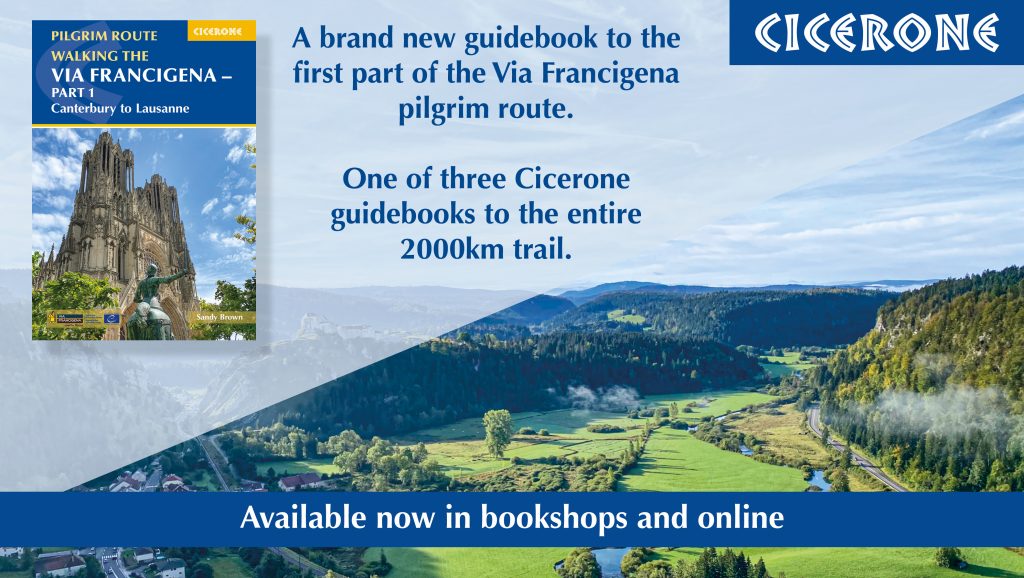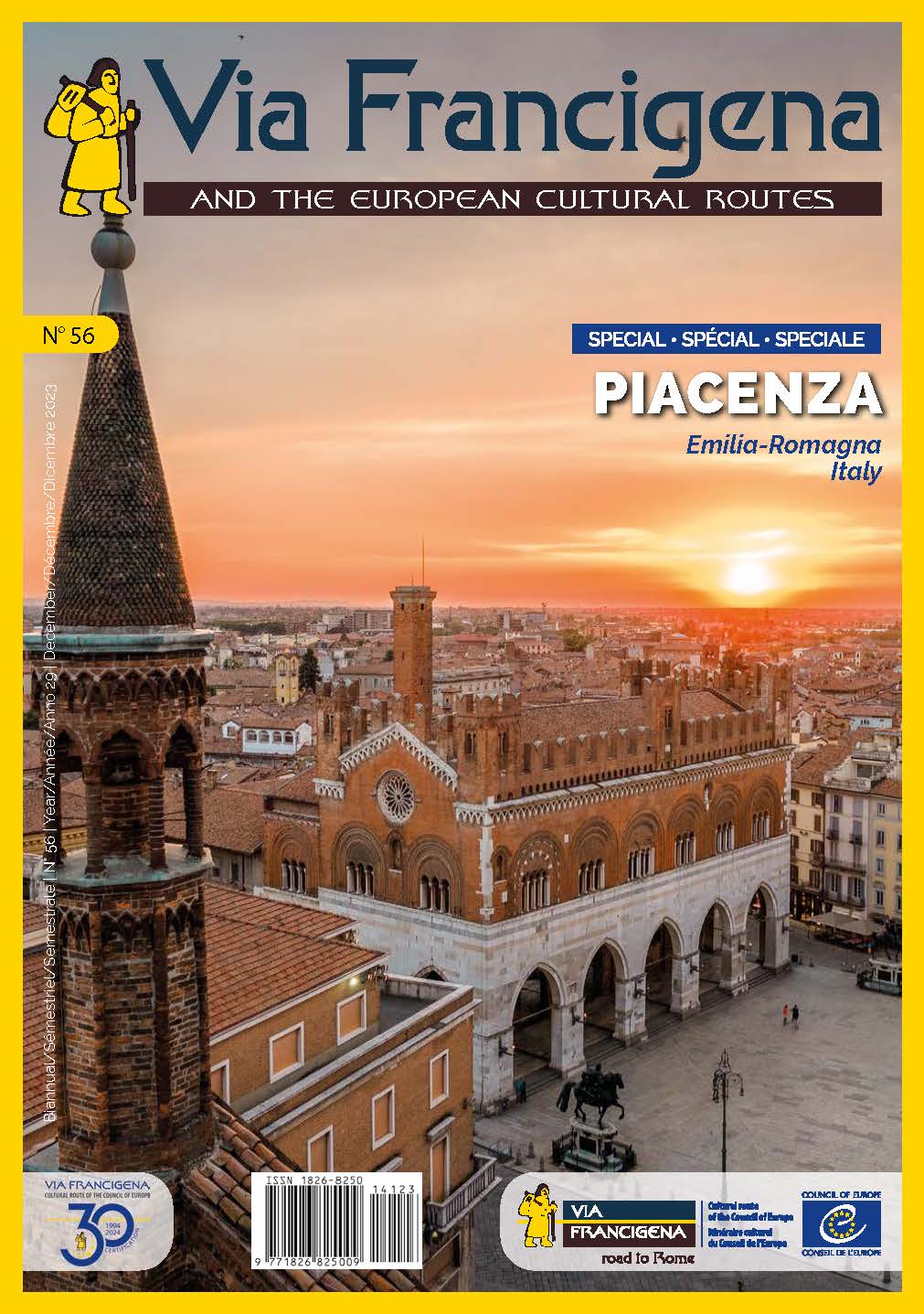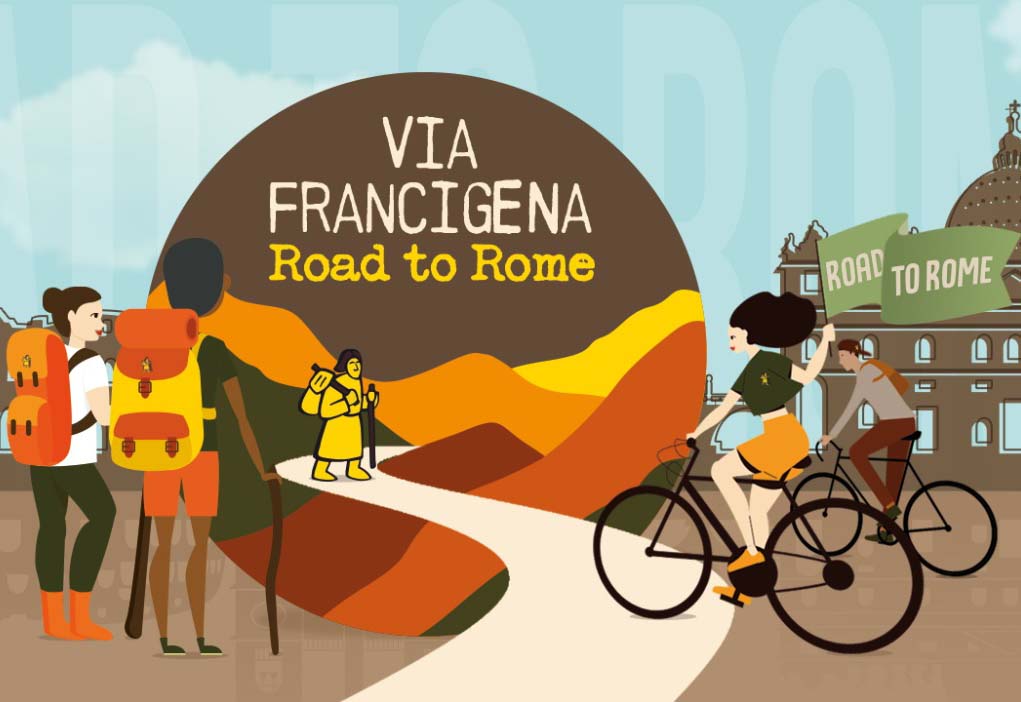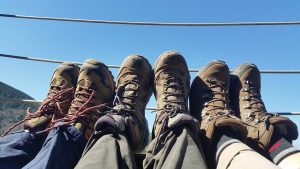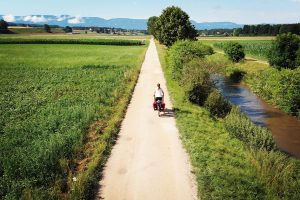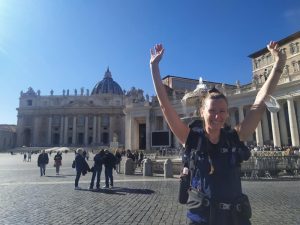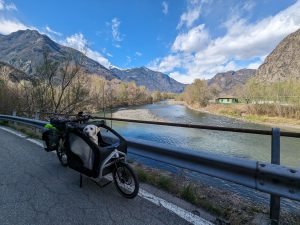How does a person boil down 1100km through three fantastic countries into just ten cool highlights? For me, after studying five years of French in school and then medieval European history in college, I looked forward with gusto to my forays into France. I found most every town to have a delight of its own. With only 10 favorites available, I didn’t even have a chance to list my favorite town (Laon). There’s just so much! But as I sifted through my still-warm memories from two trips from England through France to Switzerland, here are my top 10 highlights of the Via Francigena from Canterbury to Lausanne:
#10 – The Canals
How did they move freight before railroads? Why, on canals, of course. France boasts over 500 of these human-dug wonders, and the Francigena meets several of them, at first in Calais, then all the way south until just before Besançon. The canal-side paths make for shaded, quiet, and easy walking. Along a canal you may see birds (and people) hunting for fish or the occasional long barge with posh accommodations complete with wealthy tourists munching on snacks of fromage and Grey Poupon. I’ve heard of pilgrims who were invited onboard for a bit of conversation and a glass of wine! Even without the comforts of a well-stocked barge kitchen the canals are a memorable part of the walk. Many a day you will spend in the shade of trees alongside a French canal.
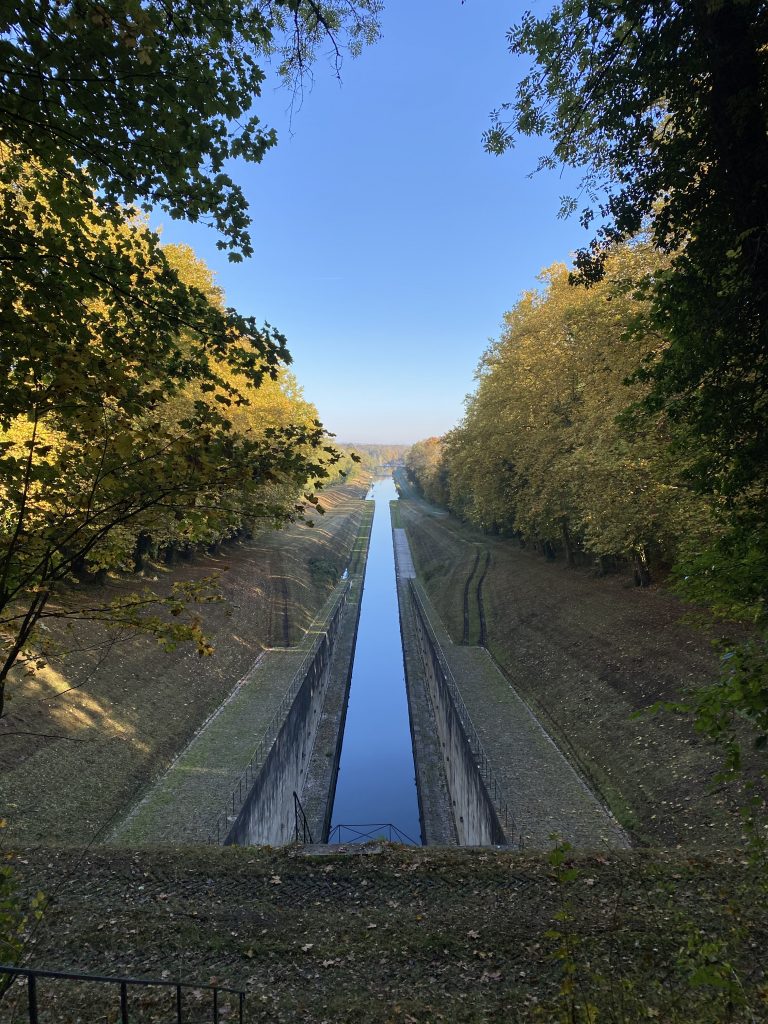
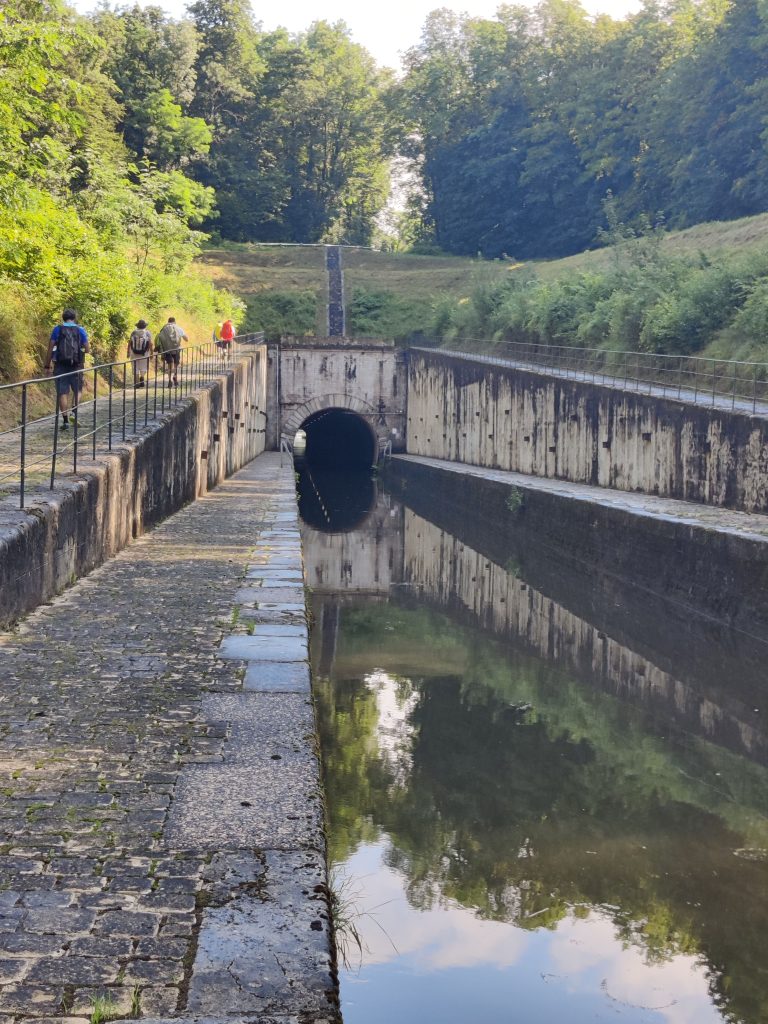
#9 – Tunnels
If the French needed a river, they dug one, and if a mountain was in the way, they burrowed through it. This expertise in the art of shoveling leads to several dark and dank, but picturesque tunnels along the route. The smallest memorable subterranean passageways are along the Gorge de l’Orbe in Switzerland. These 4-5 hand-hewn tunnels along the pristine path appear unexpectedly, but usually are only about 5m in length. The old railroad tunnel before Ornans, though, clocks in at 130m of dark scariness. As I entered, my smartphone flashlight couldn’t penetrate the blackness, so I pushed myself onward and ignored all my creepy bat-bite/spider web fantasies. Though this is a fine tunnel, the Most Amazing Tunnel award goes to the boat tunnel in the canal before Seveux. It’s not for the faint of heart and fortunately it’s not for pilgrims either. While we climb up and around it, pity the tourists on their posh barges who find themselves in that dark tunnel, with only the candlelight from above their linen tablecloths to light the way.
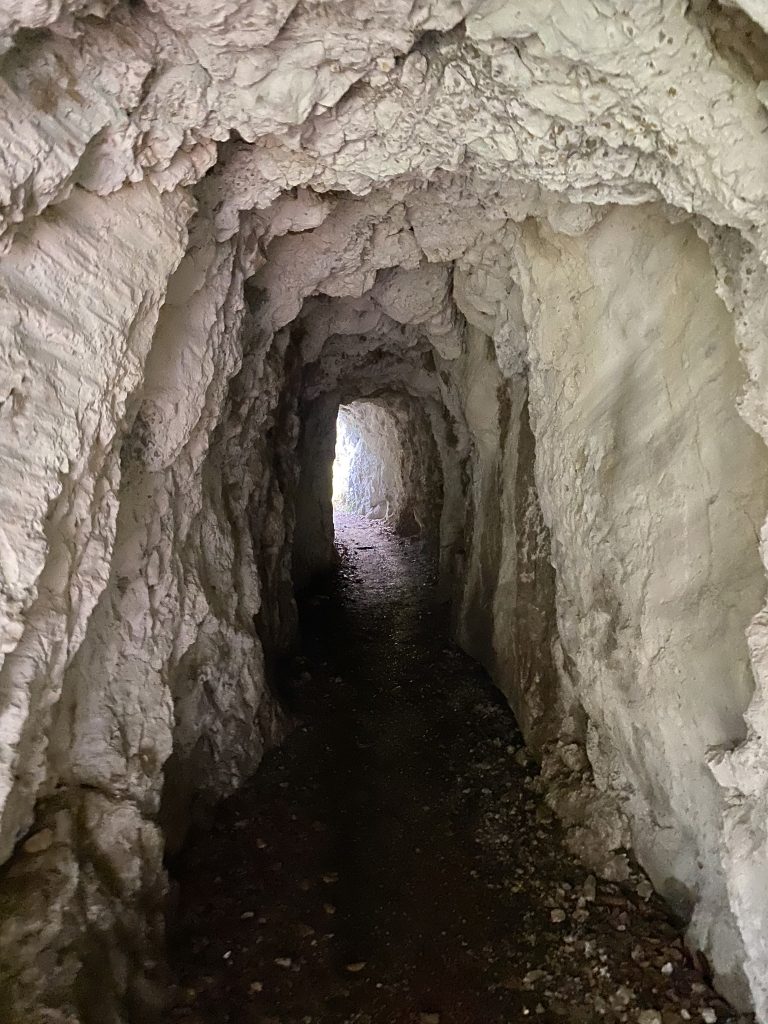
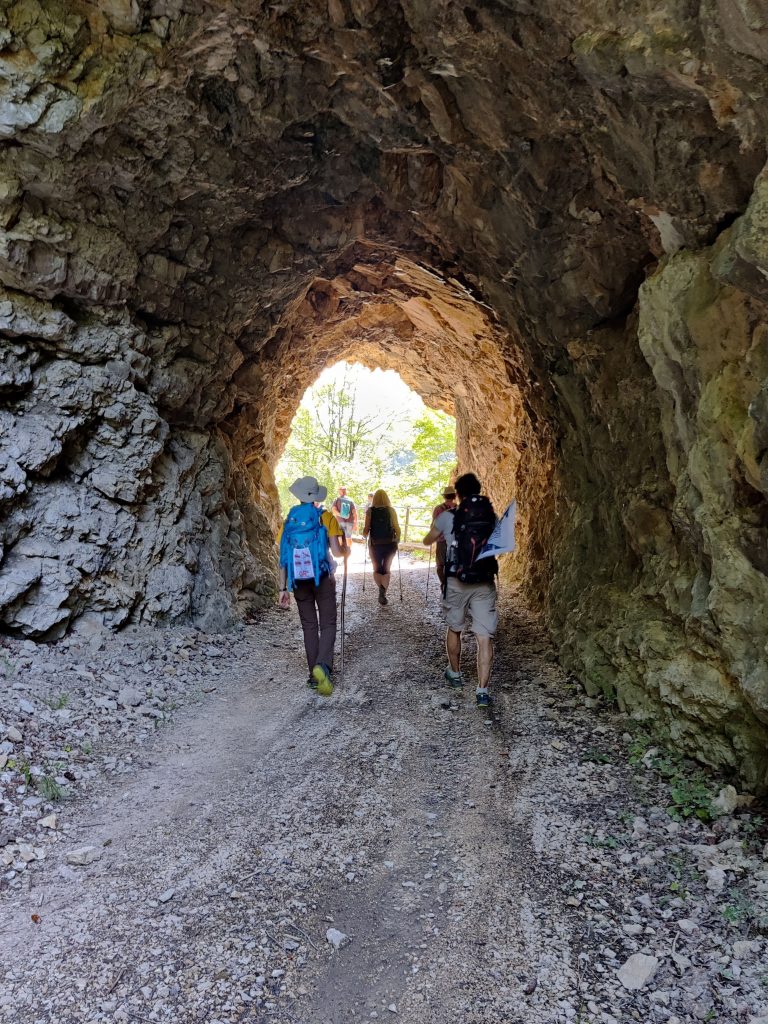
#8 – Baguettes
All that talk of barge cuisine has stirred up an appetite. Just in time comes the French baguette, the indisputable gastronomic star of the Francigena in France. Growing up in the US, “French bread” was something that dripped with butter and garlic, something you ate with a spaghetti supper. The true French bread, the venerable baguette, is designed to be eaten with anything – from simple beurre to a tasty amount of jambon et crudités. Villagers begin their day with a routine first stop for bread and gossip at their village boulangerie. That loaf is for a sandwich at lunch, then will be enjoyed with a lovely pot of something at dinner, and the tasty bits left are toast in the morning. Rinse and repeat. It’s admirable that a baguette in Calais is virtually identical to a baguette in Pontarlier. It’s as though they came from the same oven, when actually there are 1000km between the two. The chewiness, the taste, the delicate center? Fantastique!
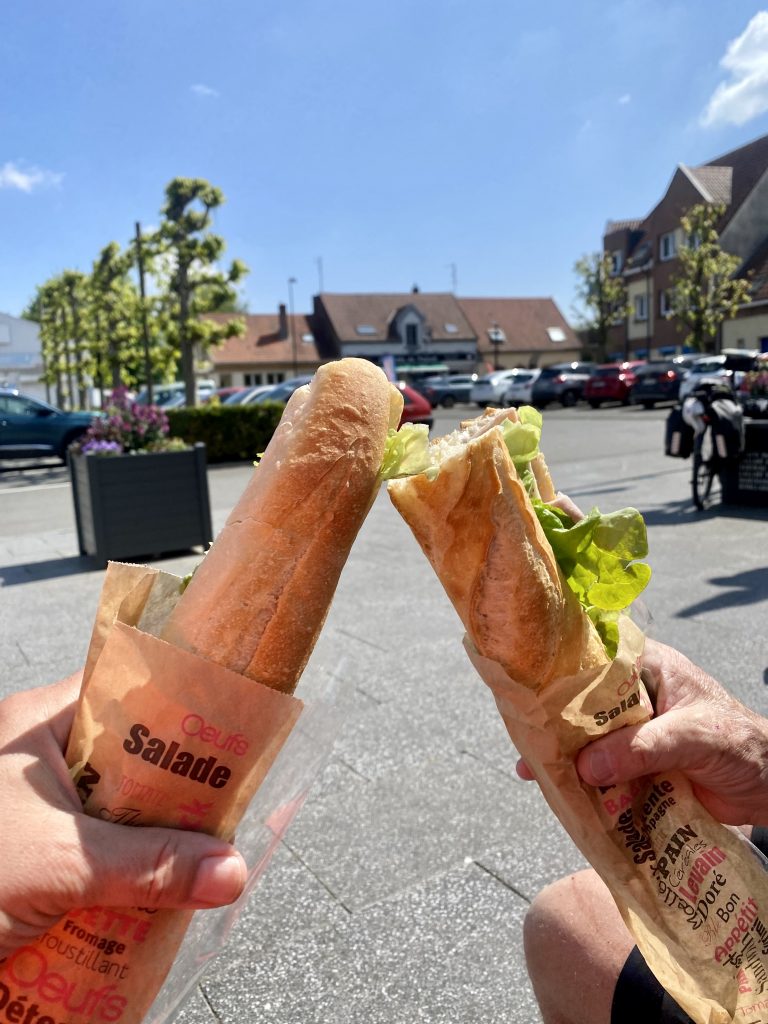
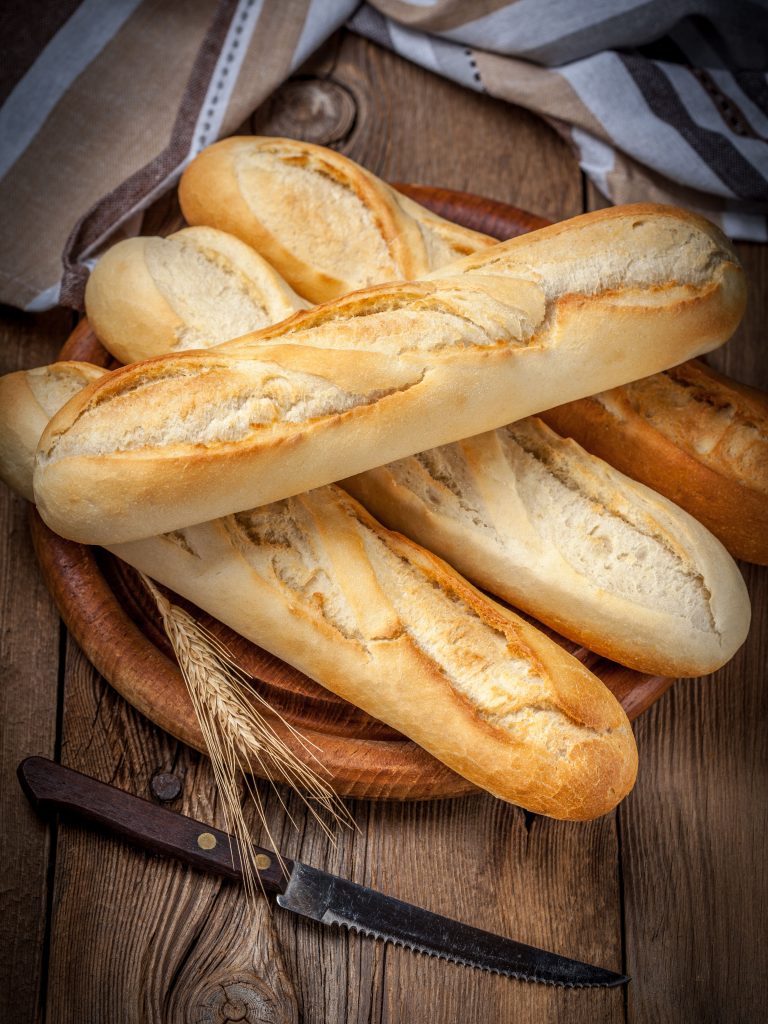
#7 – War Memorials and Cemeteries
Strange that a highlight would be a reminder of something truly terrible, right? But it’s impossible to walk the Francigena in France without making peace with your feelings about the Great War. There are large and small cemeteries scattered throughout the region, and every town has its statue in honor of its sons killed in WWI. Emotions well up most strongly at Notre-Dame-de-Lorette, the immense cemetery and ossuary at Ablain-Saint-Nazaire that holds the remains of over 40,000 French soldiers. The site was the scene of five major WWI battles, though it’s hard to imagine war in this serene and peaceful place as you walk or ride through it as a Francigena pilgrim. I find the Ring of Remembrance, which names 579,606 of all nationalities who died in the area during the war, to be the most moving of all the WWI sites. Every time I visit I find myself stunned into silence, an inner quiet caused by a mixture of grief and hope.
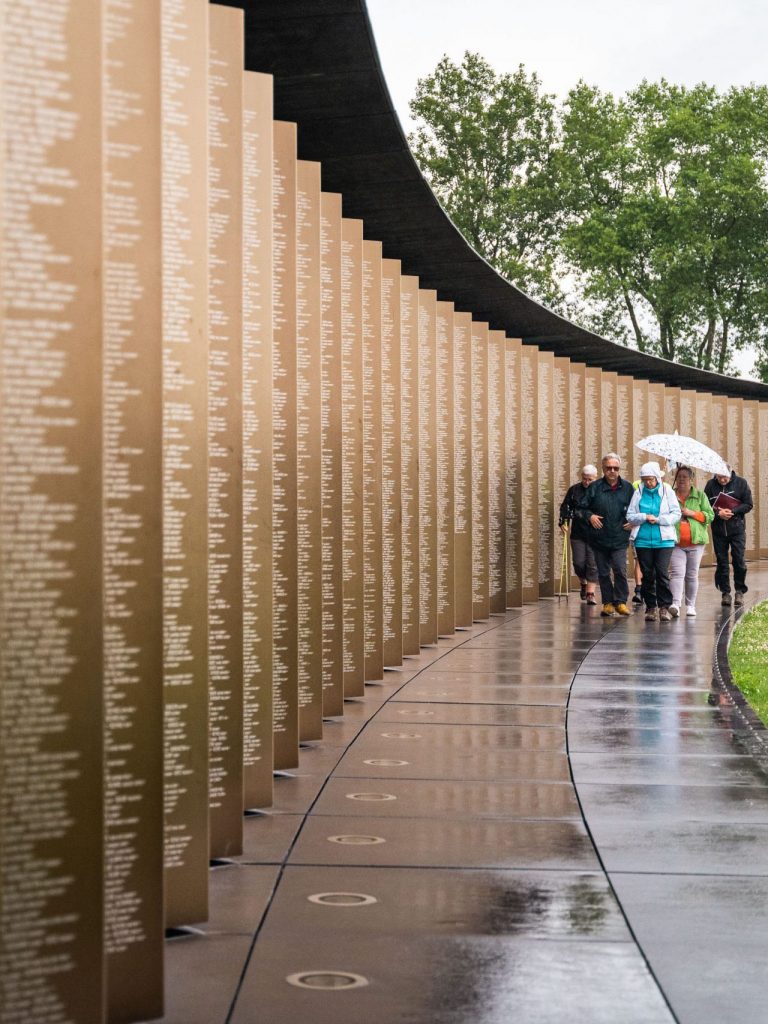
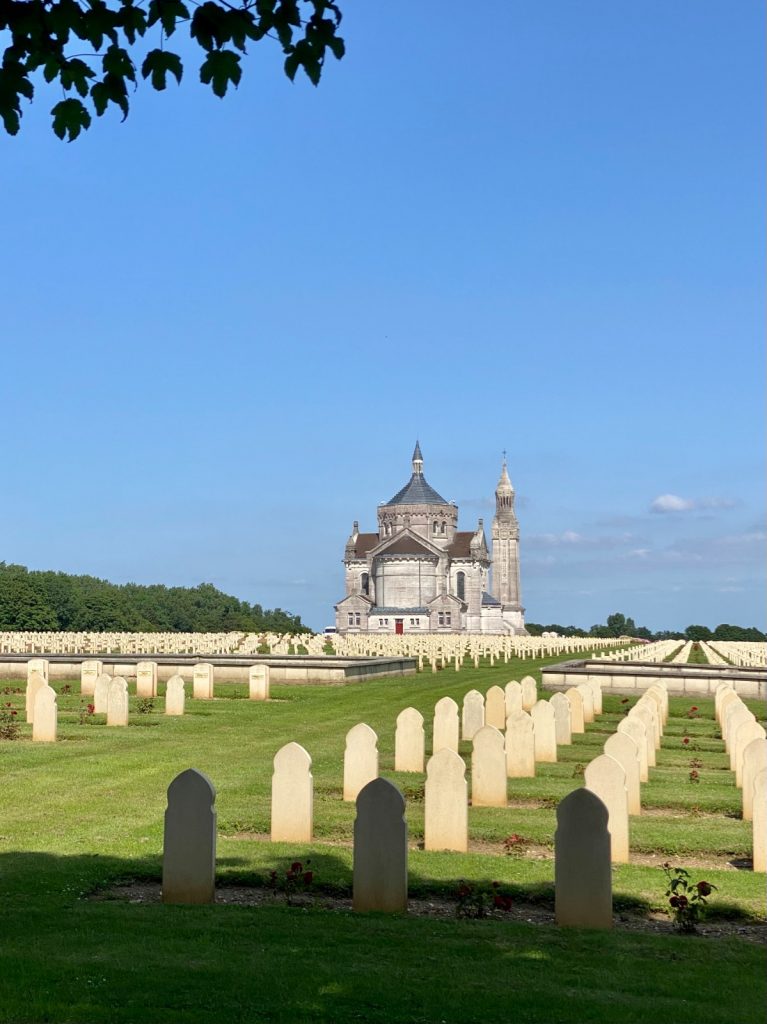
#6 – Wooden churches and stained glass
A wooden church in the US is no big deal. We throw our churches together using the cheapest materials, throw some brick on them and slap a steeple on top. Done. If they last a century, like wow! But compare our ticky-tacky wooden churches to something like the 600-year old wooden church of Saint-Nicolas in Outines. Inside it feels like a dark and ancient forest, with thick tree trunks holding up a wooden canopy above. There’s another of these at Lentilles, that one dedicated to the hero of Compostela, Saint-Jacques (well, and Saint-Philippe). These two religious buildings are jewels in the half-timbered architecture of their surrounding villages, and you’ll miss them both by diverting onto the shorter Coole-Donnement option. They’re testament to a long-ago time when these grain-covered fields were home to vast forests.
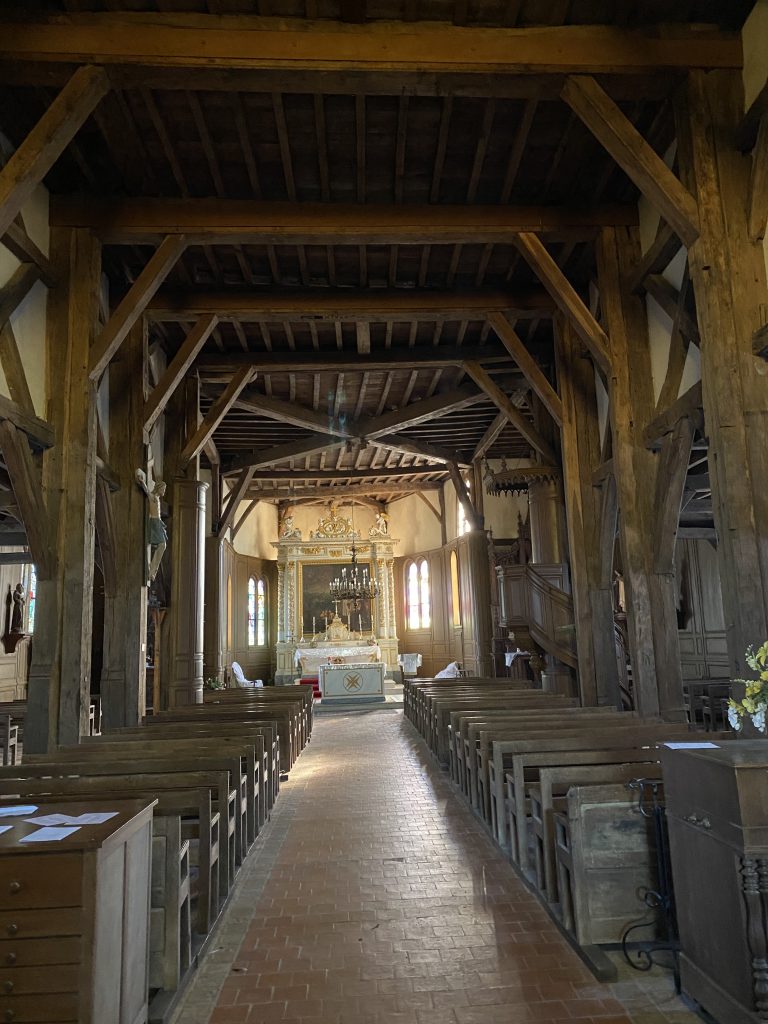
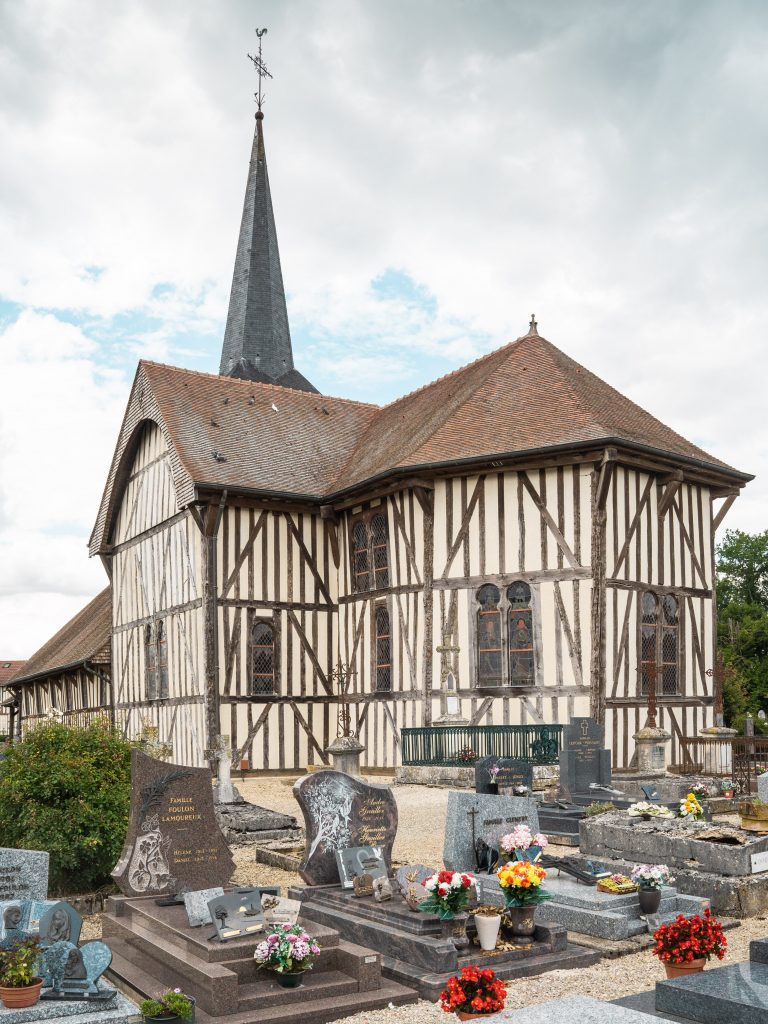
#5 – English Channel
The 30-odd kilometer moat between Britain and the Continent has kept England safe from Europe (and Europe safe from England), but in peacetime it has an unforgettable beauty. The French call it the Côte d’Opale for good reason. La Manche south of Calais features all the colors inside an opal – everything from soft greys to the light and cloudy turquoise of the water. A pilgrim can easily save a day by walking directly from Calais to Guînes, but what a pity to miss the soft colors of the coast near the one-time harbor of Wissant, used by notables like Sigeric and Thomas Becket? Between Canterbury and Rome there is no such walk, but it’s right here in all its memorable grey-blue, windswept beauty between Calais and Wissant.
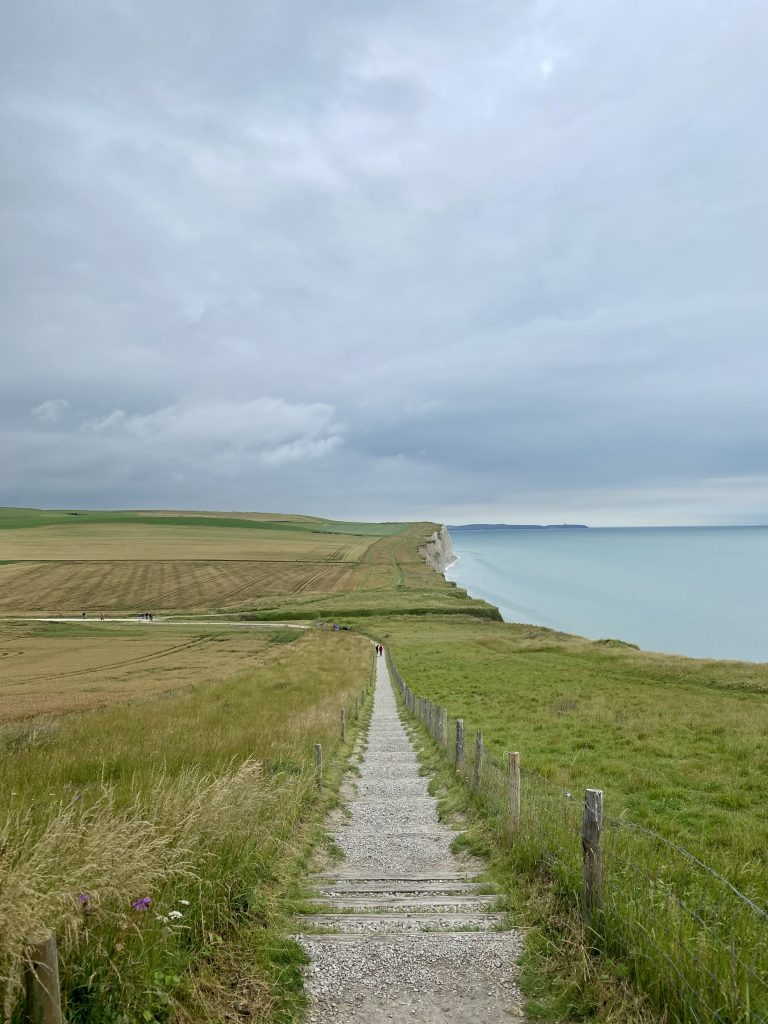
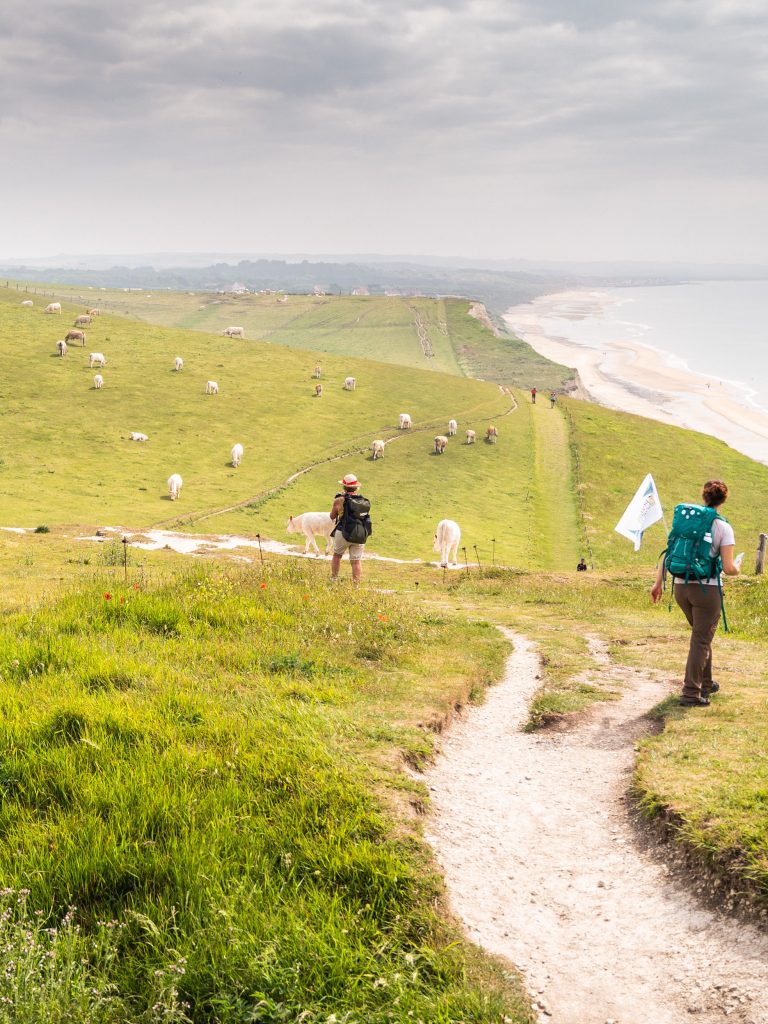
#4 – Champagne
The closest my childhood family ever came to champagne was “Miller High Life, the champagne of bottled beer,” which I guess at one time was actually packaged in champagne bottles. If you didn’t know it already, on the Francigena you will learn that there is champagne and then there is Champagne. I’m talking D.O.P here. The Francigena enters the one-and-only Champagne wine region just before Reims and the wise, champagne-minded pilgrim will budget an extra day enjoying the champagne cellars of Reims, a 200-km underground labyrinth of wine cellars that earned a UNESCO World Heritage honor. If you make it out of Reims after all that champagne, you soon find yourself walking through the champagne vineyards of the Montagne de Reims at Verzy and Verzenay, followed soon by Chalons-en-Champagne which styles itself as the capital of this region. In fact, you flirt with champagne vineyards nearly as far as Brienne-le-Château. There is only one true adult beverage for a celebration, and it comes from right here.
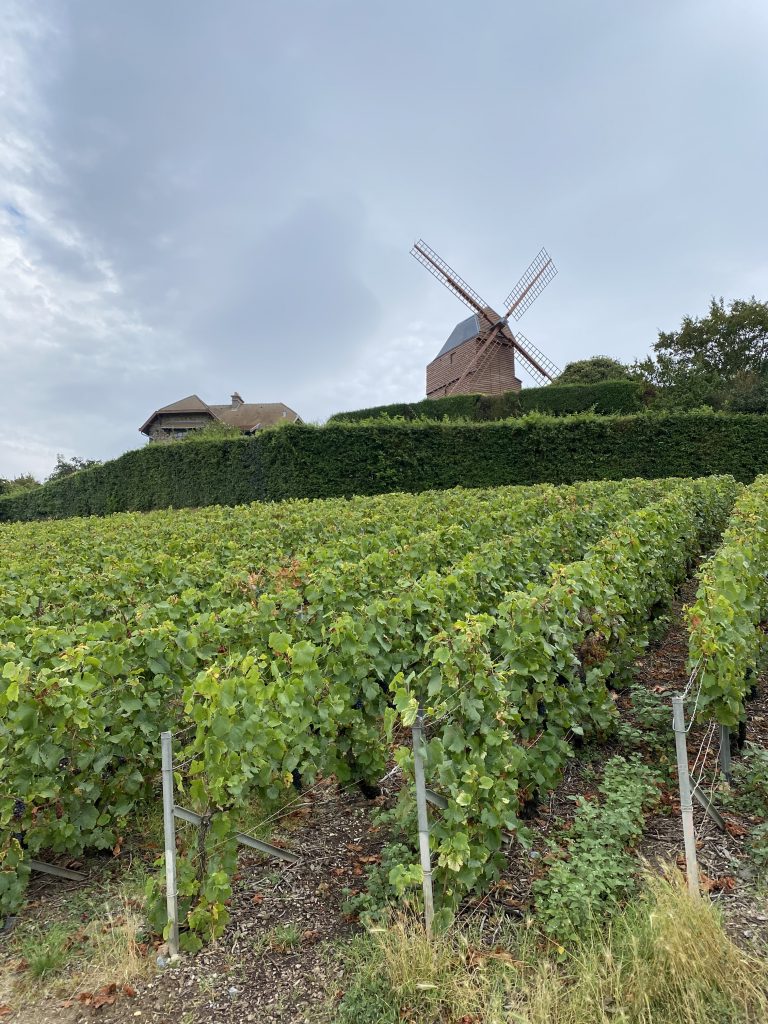
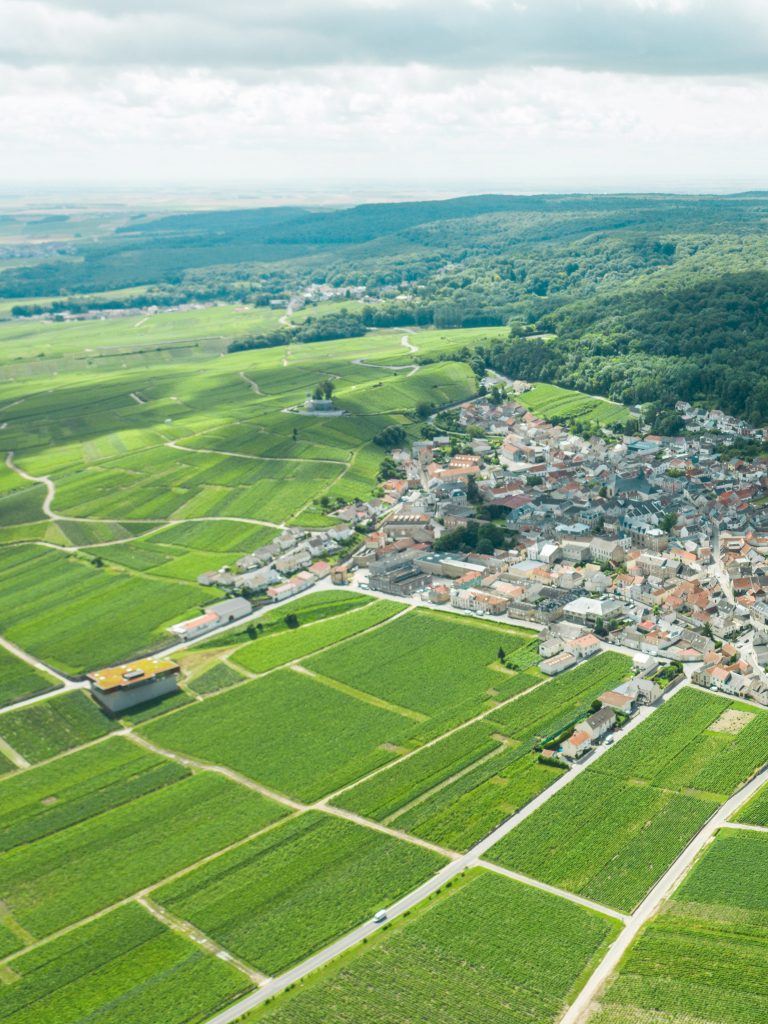
#3 – Chambres d’Hôtes
People sometimes overlook the French part of the Via Francigena because they’ve heard accommodations are scarce and tent camping is required. Actually, using the French system of chambres d’hôtes (home hospitality, often with half board available) means you can leave your tent at home. In fact, where there isn’t a grocery store, your best bet is to have your hosts pack you a lunch to carry along the way to the next chambre d’hôte. Local stewards of the Via Francigena have developed a nice system here, one where food and a bed is just the start of the benefits. Thanks to the Francigena’s chambres d’hotes I now have friends from near Calais all the way past Besançon. My most memorable meals in France were served at private homes along the Francigena. There are websites devoted to the French network of these, as well as their cousin, the gîte. Do bring your Google Translate if your French is rusty since most of the hosts speak little English.
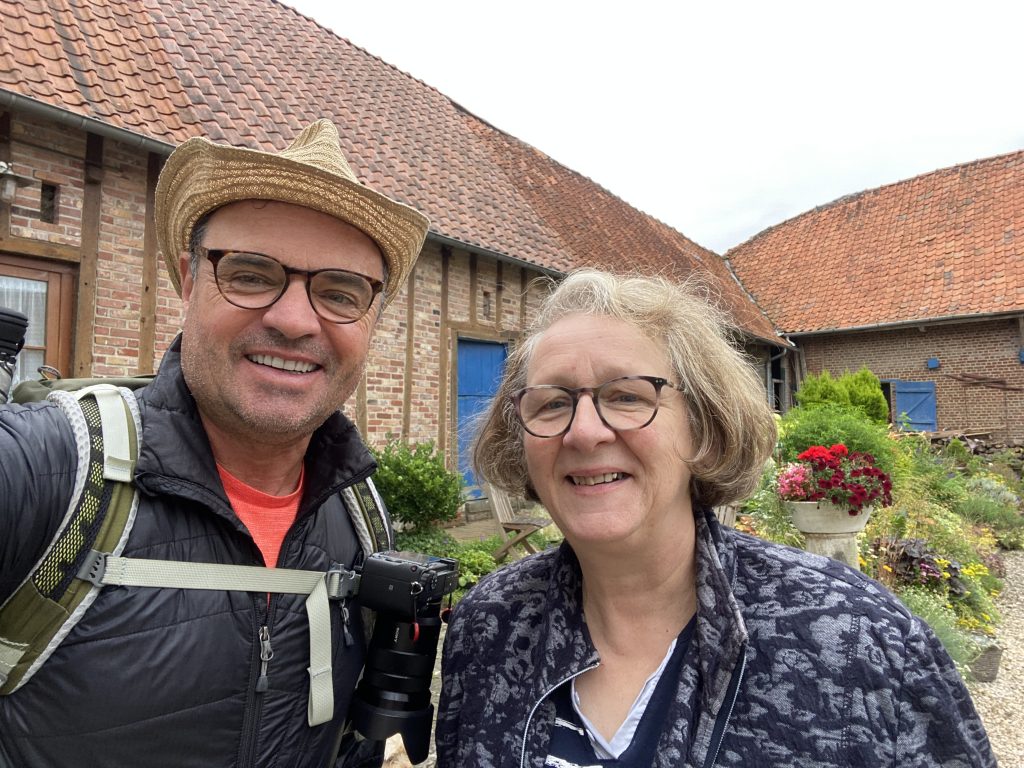
#2 – Canterbury
Merge a medieval pilgrimage center with a modern college town and you come up with Canterbury. In its thriving city center, museums sit next to trendy eateries, all huddled inside the Roman walls, centered around the Cathedral Close. And it’s all in English! Since it’s pedestrianized, you don’t even have to know a boot from a bonnet. To walk from Westgate to Whiterfriars is to walk through centuries of history and finish in a modern shopping mall. Turn left partway along and come to the newly-renovated Christchurch Gate, your entry into the Land that Time Forgot. Here are park-like acres of grass, well-tended medieval ecclesiastical buildings, and wizened and robed clerics racing to the next service. The Cathedral is dripping in English history, with its kings, queens, princes, abbots, and archbishops keeping guard from their stone tombs. If you’re beginning your pilgrimage from here, make certain to check in at the bookstore for a volunteer chaplain who will bless your journey, and if you have time, go to the Daily Choral Evensong at 17:30 to enjoy the music as it wafts among the statues and saints.
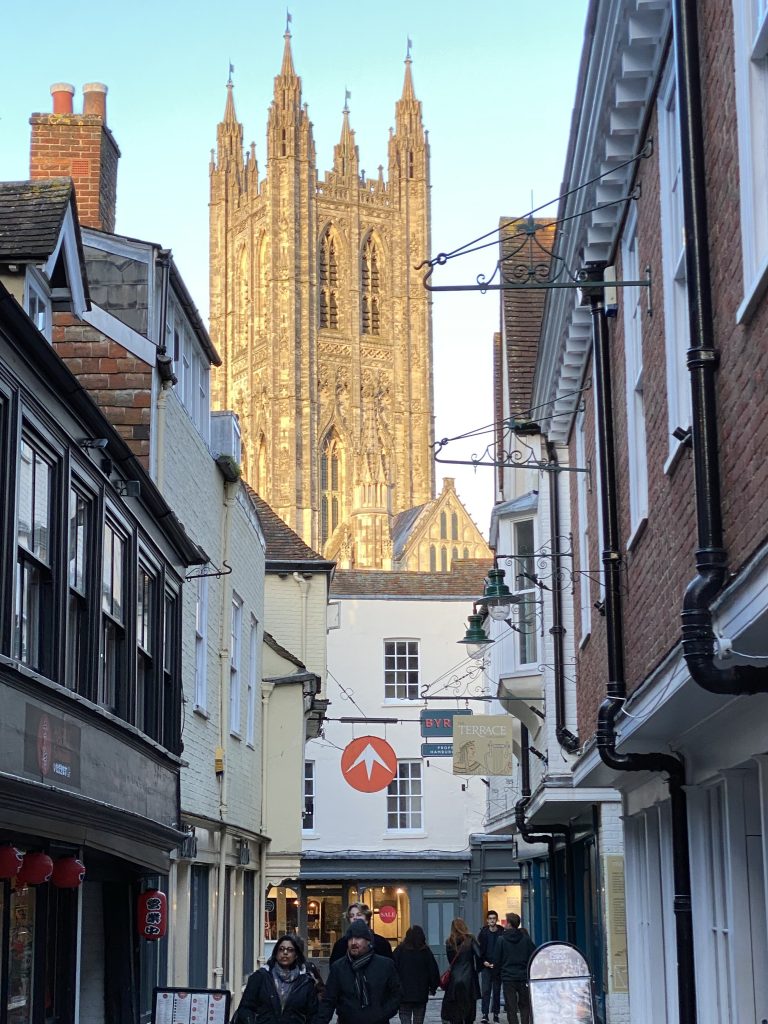
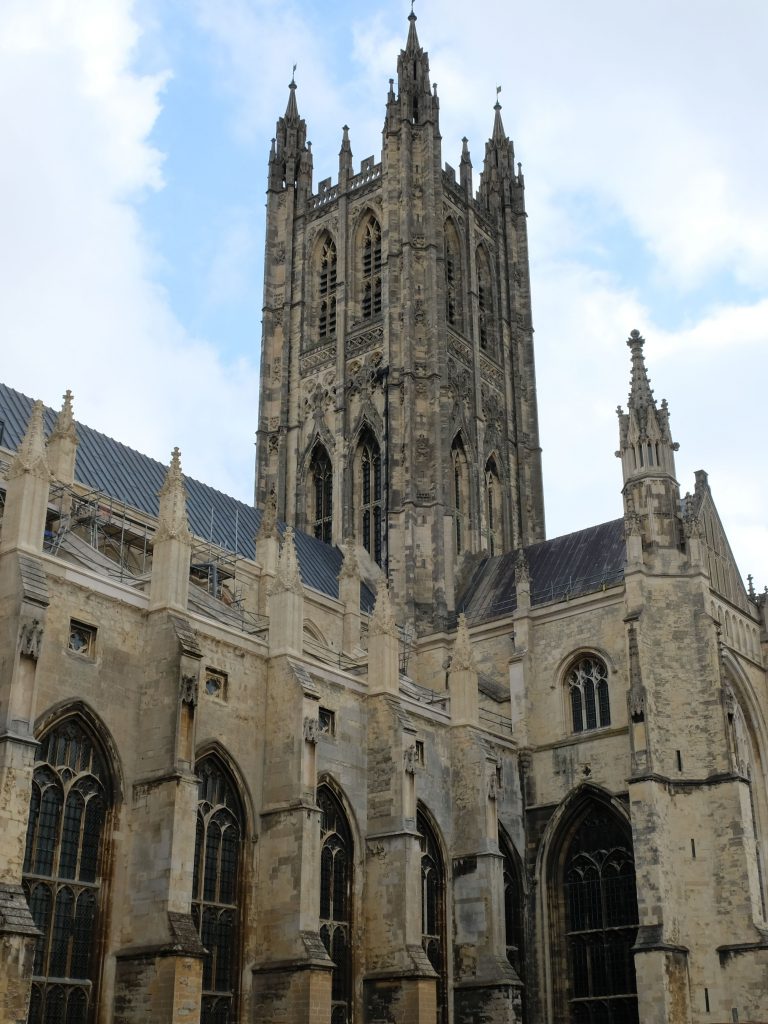
#1 – Reims Cathedral
One of my sisters once told she’d been to Reims, but was too tired of the humdrum of touring Gothic churches to go inside. As they say, you can choose your friends, but not your family. I choose friends who are as excited by great architecture and history like me! Whether you like churches or not, Reims Cathedral is a piece of French history, maybe even more important than Notre-Dame-de-Paris. You could say that, with the baptism of Clovis here in 508 AD, France itself got its start. Subsequent kings of France were consecrated here for a thousand years, more or less, until the French Revolution. Joan of Arc led Charles VII here for his coronation. All is not glory. The Germans lobbed 300 shells on the ancient building during WWI, while the rebuilt cathedral was the host site for the treaty that ended WWII. As you enter the main doors, look back and see the “Wall of Kings” complete with one king per niche. On your way out, look for a smile from the “Smile of Reims” the happy stone angel in the Reims façade, who wishes you a blessed and happy journey.
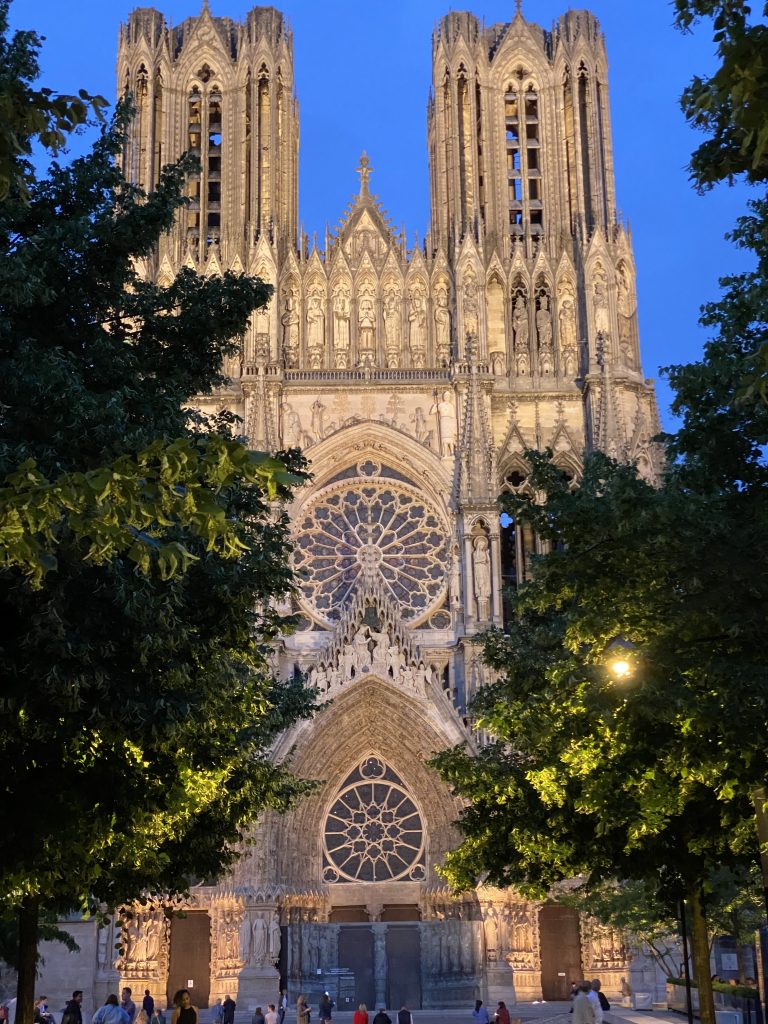
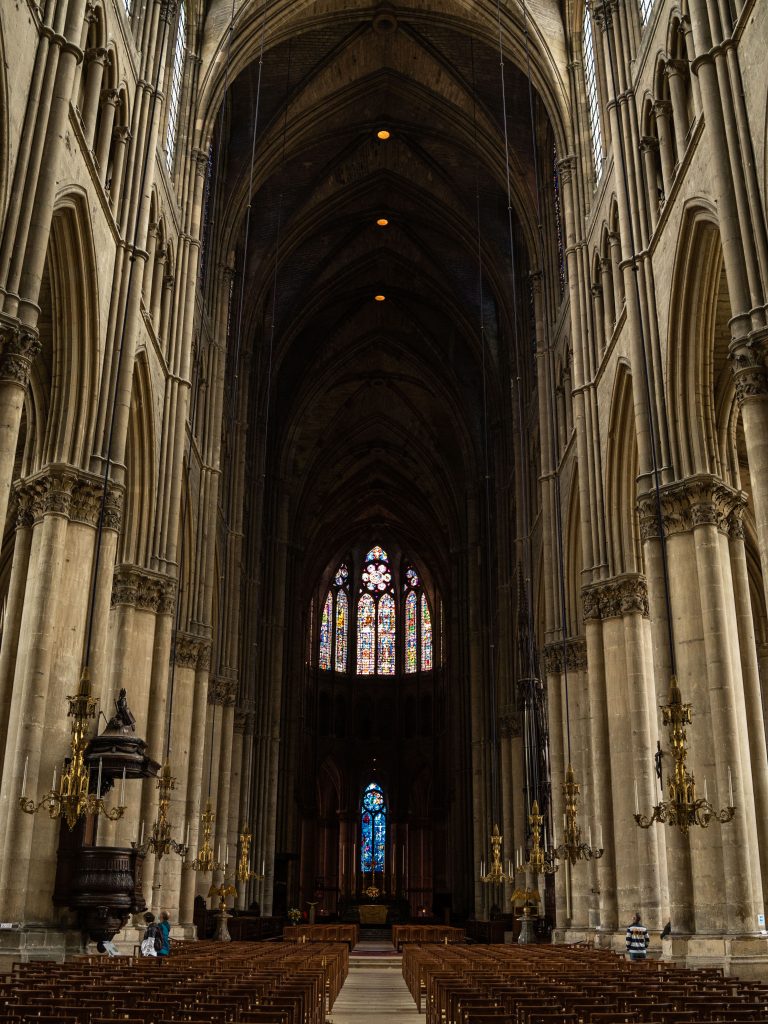
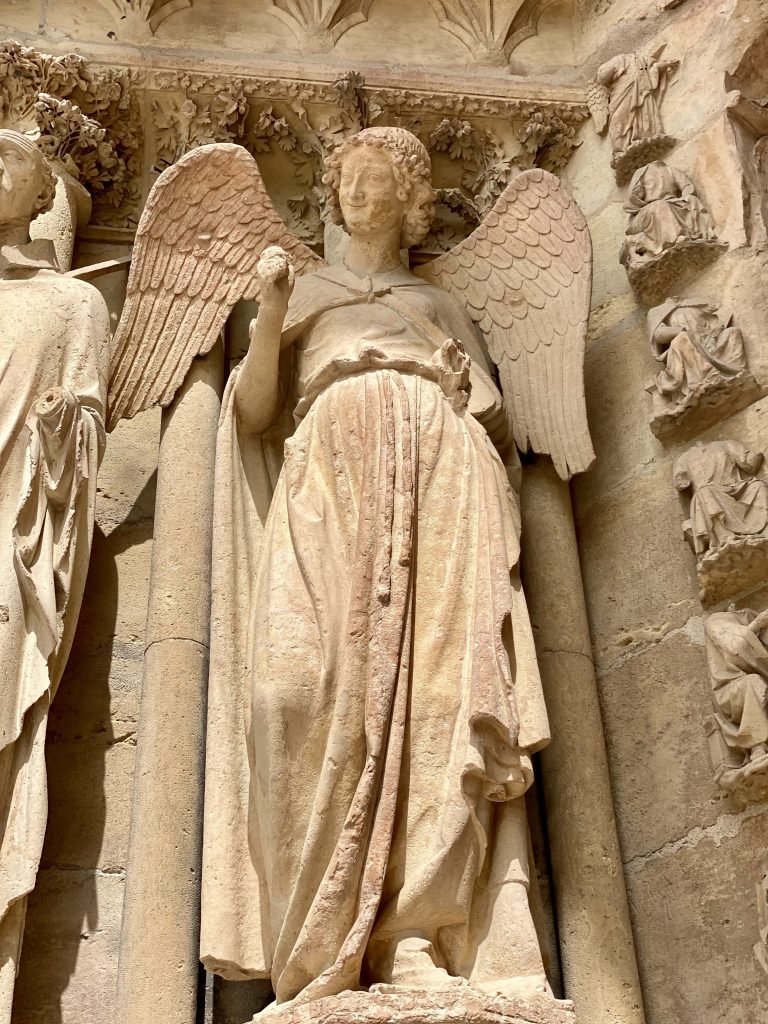
The story of the Via Francigena is that there is just so much to see and experience – the culture, the sights, the food, the history, the people. It’s all a wonder, and it’s not exaggeration to say that some of the best days of my life were under the sun on the Via Francigena between Canterbury and Lausanne.




